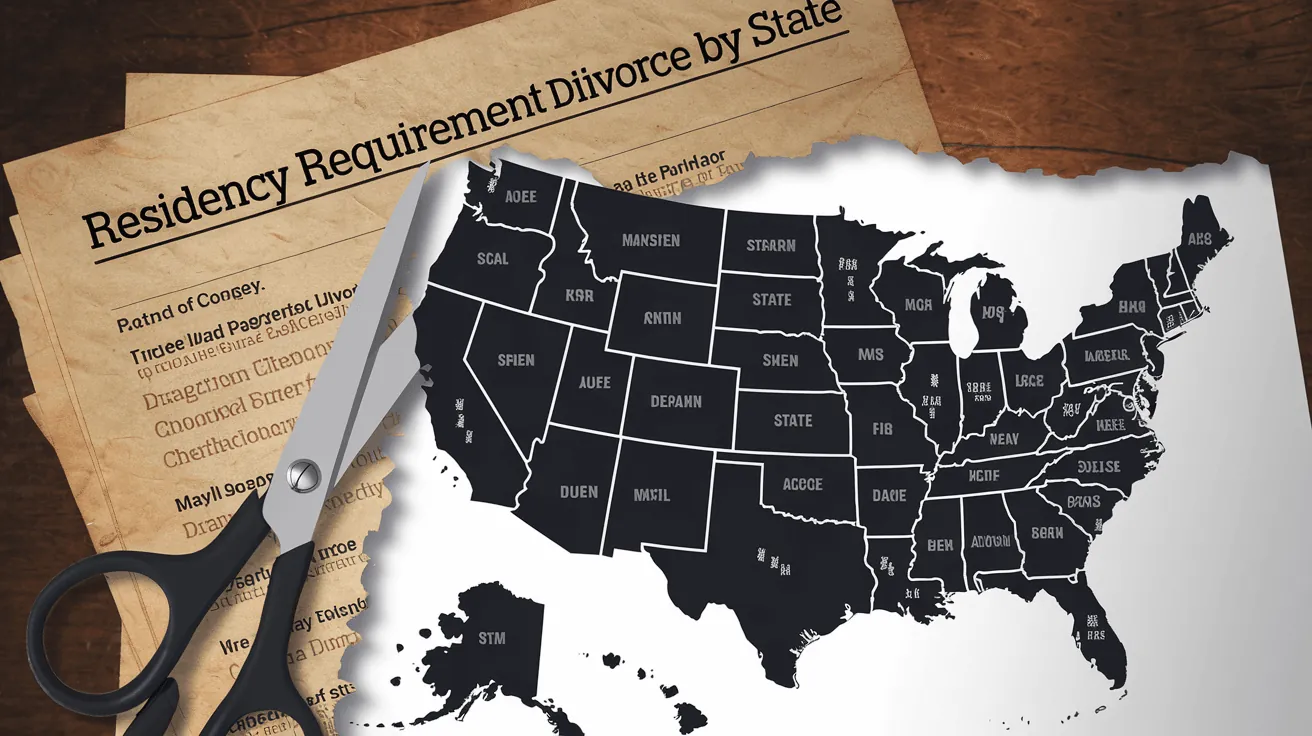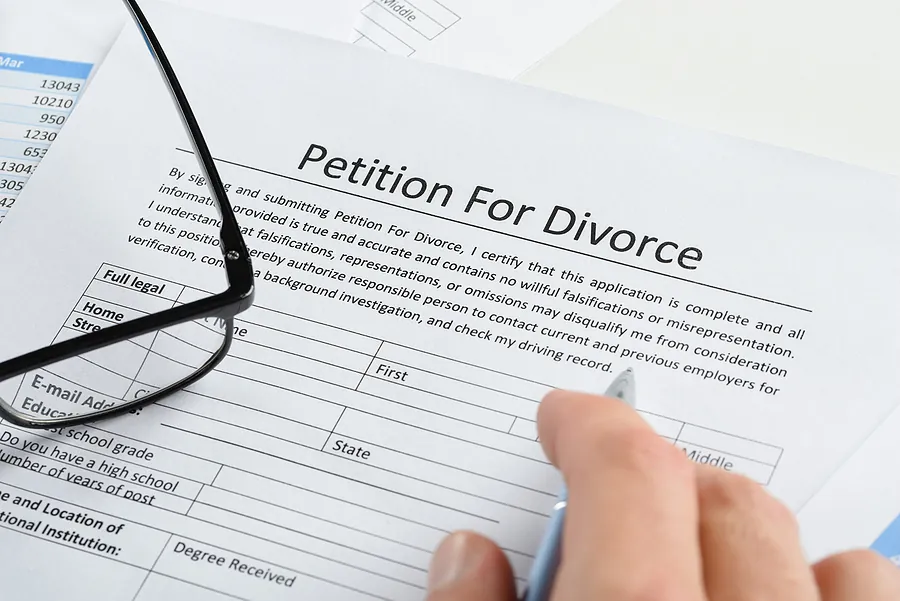If you’re researching how to file for divorce in Maryland without a lawyer, you’re probably seeking a straightforward, low-cost path to ending your marriage while remaining in control of the process. Good news: many Marylanders successfully manage their own divorce cases—especially when the process is uncontested. This comprehensive, friendly guide walks you through each step, from eligibility to finalizing your divorce, offering practical insights and real-world examples along the way.
Introduction: Why Go the DIY Divorce Route in Maryland?

Filing for divorce can feel daunting, but many people discover that how to file for divorce in Maryland without a lawyer is simpler and more accessible than expected—especially for amicable splits. Handling your own divorce, also known as self-representation or “pro se” divorce, provides several advantages:
- Cost savings: No attorney fees—just court costs and filing fees.
- Control and privacy: Direct control over paperwork, negotiations, and timelines.
- Speed: Uncontested divorces with mutual agreement often move quickly.
Of course, self-representation means taking responsibility for forms, deadlines, and appearances. This guide gives you the confidence and practical tips needed to navigate the process successfully.
Eligibility: Can You File for Divorce in Maryland Without a Lawyer?
Before you begin, it’s important to ensure you’re eligible to file in Maryland and that a do-it-yourself divorce (without attorney help) is appropriate for your situation.
Residency Requirements

You or your spouse must be a Maryland resident to file for divorce. The specifics depend on where the grounds for divorce (the reason you’re divorcing) occurred:
- If the ground occurred in Maryland: Just be living in Maryland when you file.
- If it happened outside of Maryland: At least one spouse must have resided in Maryland for at least six months before filing.
Legal Grounds for Divorce in Maryland
As of 2023, Maryland allows three statutory grounds for absolute divorce (legal end of a marriage):
- Mutual Consent: Both spouses agree on all key issues—property, support, and, if applicable, child custody/support.
- 6-Month Separation: You’ve lived “separate and apart” for at least 6 months (even under the same roof if not as a couple).
- Irreconcilable Differences: Fundamental problems or conflicts that led to the marriage breakdown, and cannot be resolved.
Using no-fault grounds (mutual consent, irreconcilable differences, or 6-month separation) makes filing without a lawyer much easier.
Essential Forms and Filing Locations
County Circuit Courthouses
All Maryland divorce cases are filed in county Circuit Courts—not District Courts. File in the county where you or your spouse live or work.
Required Divorce Forms

For a do-it-yourself divorce in Maryland, gather the following forms:
- Complaint for Absolute Divorce (CC-DR-020)
- Civil Domestic Case Information Report (CC-DCM-001)
- Mutual Consent/Settlement Agreement (helpful for uncontested cases)
- Parenting Plan and Child Support Worksheets (if you have minor children)
- Fee Waiver Request (CC-DC-089), if you cannot afford the filing fee
All forms are available from [the Maryland Courts website].
Tip: Always use the most current forms; county courts may have supplemental requirements.
The Step-by-Step Process: How to File for Divorce in Maryland Without a Lawyer
Step 1: Prepare Your Divorce Documents
- Fill out the Complaint for Absolute Divorce (CC-DR-020):
- List names, addresses, marriage information, and grounds for divorce.
- Don’t include confidential addresses if safety is a concern; contact the clerk in such cases.
- Include additional forms as needed:
- Mutual Consent Divorce: Attach a settlement agreement signed by both spouses detailing property, support, and custody arrangements.
Pro Tip: Make at least two copies of each form—one for you and one for your spouse.
Step 2: File for Divorce at the Circuit Court
- File paperwork in person, by mail, or—if you’re comfortable—via e-filing (e-filing is not mandatory for self-represented litigants at this time).
- Pay the filing fee (typically $165-$200, varies by county); if needed, request a fee waiver by submitting CC-DC-089 with proof of low income.
- Ask for all your forms to be date-stamped by the clerk—this is important for your records.
Step 3: Serve Your Spouse Properly
- Service of Process is essential. You cannot personally deliver the documents to your spouse—someone else must do it, such as:
- Private process server
- Sheriff’s deputy
- Certified mail (with proof of delivery)
- For mutual consent divorces, your spouse will likely sign and return an Acknowledgment of Service or similar form.
Proof of Service: File an affidavit or return of service with the court—the judge won’t move forward until this is submitted.
Step 4: Waiting Periods and Mandatory Classes
- No mandatory waiting period for mutual consent divorces—the court can schedule a hearing as soon as paperwork is processed.
- For 6-month separation: Ensure you have lived apart in accordance with Maryland law for at least 6 months prior to filing or as specified.
- Parenting Classes: Most counties require parents of minor children to attend a parenting class and present a completion certificate before a final divorce order will be granted.
Step 5: Final Hearing and Getting Your Divorce Decree
- Hearing: Even in uncontested cases, the court will likely set a brief hearing. You may be asked questions about the marriage, plans for children, and the fairness of your agreement.
- If the judge is satisfied, they will sign a Final Decree of Absolute Divorce (the legal document finalizing your divorce).
- Get certified copies of the decree from the clerk—you’ll need these to change your name, handle accounts, and establish custody/support.
Case Timeline: Uncontested, well-prepared divorce cases may wrap up in as little as four to eight weeks.

Practical Example: Uncontested DIY Divorce in Maryland
Let’s meet Lisa and Andre:
- Scenario: Lisa and Andre have decided to end their marriage. They agree on all points (property division, no children).
- Lisa downloads and fills out the Complaint for Absolute Divorce (CC-DR-020), along with the Civil Domestic Case Information Report.
- She attaches a Mutual Consent Agreement signed by both spouses.
- Lisa files the documents in her local Circuit Court and pays the fee.
- She arranges for proper service—Andre receives the papers and returns signed proof of receipt.
- The court schedules a hearing. Lisa attends, answers the judge’s questions, and their agreement is approved.
- Lisa receives her decree about five weeks after filing.
Common Mistakes to Avoid When Filing for Divorce Without an Attorney
- Not serving your spouse properly: The process must comply with court rules.
- Failing to include all required forms: Especially if minor children or property are involved.
- Filing in the wrong county or before meeting residency/grounds requirements.
- Skipping required classes or hearings.
- Using outdated or unofficial forms.
A simple oversight can slow down or derail your case—double-check requirements before each step.
Frequently Asked Questions About Maryland Pro Se Divorce

Q: Can I file for divorce in Maryland without a lawyer if my spouse disagrees?
A: Yes, but your case will be contested and may involve complicated hearings, evidence, and possible trials. Legal counsel is recommended in contested situations.
Q: Which forms do I need for a pro se divorce in Maryland?
A: At minimum: Complaint for Absolute Divorce (CC-DR-020) and Civil Domestic Case Information Report (CC-DCM-001). Add settlement agreements, parenting plans, and support worksheets as needed.
Q: Can I modify my divorce order without a lawyer?
A: Yes, modification is possible but may be complex depending on the change. Significant modifications—particularly to custody—may warrant a consultation with an attorney.
Q: What is the cost of filing for divorce without an attorney in Maryland?
A: Expect a filing fee around $165–$200, plus service costs. Filing fee waivers are available for those who qualify financially.
Helpful Maryland Divorce Resources for Self-Represented Litigants
- Maryland Courts Family Law Forms: Official, up-to-date forms and instructions.
- Maryland Court Help Centers: Free walk-in and phone assistance for self-represented parties.
- Family Division Self-Help Centers: Most circuit courts offer help with forms, filing, and procedures.
- People’s Law Library of Maryland: Explanations of divorce law and procedures.
- Divorce Video Series (Maryland Courts): Short, plain-language videos explaining court processes.
Final Thoughts: Is Filing Without a Lawyer Right for You?
Filing your own divorce in Maryland—without a lawyer—is manageable for many, particularly in amicable, uncontested situations. By following the actionable steps in this guide, organizing your paperwork, and using official resources, you can keep costs low and control the outcome.
However, if your case has complexities (disputes over property/children, domestic violence, hidden assets), consult a qualified Maryland family law attorney to protect your rights.
For personalized help, visit your Maryland Circuit Court’s website or the Maryland Court Help Center before filing, and check for any local or county-specific requirements.